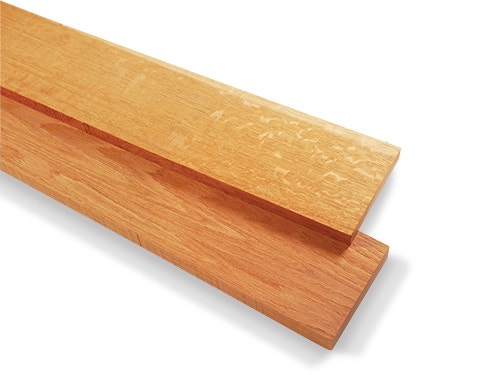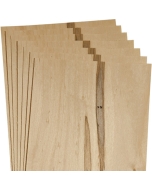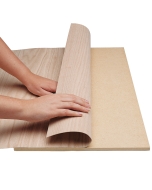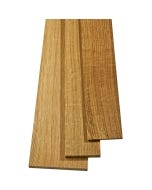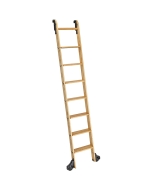White Oak: Quercus alba
Building that first piece of Arts & Crafts furniture is a woodworking rite of passage for many of us. I recall how excited I was at the prospect of cutting lots of mortise-and-tenon joints, which were an achievement for me at the time. But I also eagerly anticipated the chance to shop for and use quartersawn white oak. Its distinctive patterns of ray flecks are a hallmark of the style, and it was a thrill to see them reveal their swirly glory as those roughsawn boards exited the planer.
Heck, that "reveal" still makes my heart flutter 20-plus years later! Medullary ray flecks only show themselves when Quercus alba is sawn so that its growth rings are presented roughly square to the board faces. When those growth rings are oriented between 30 and 60 degrees instead, "riftsawn" white oak hides that figure and presents a finer, even grain pattern on both its faces and edges. Plainsawn boards — the third milling option — show a mix of straight and arching cathedral grain, more in keeping with the look of off-the-shelf red oak.
Aside from their visual appeal, quartersawn and riftsawn white oak are more dimensionally stable cuts than plainsawn boards. They're less likely to cup or twist, and in quartersawn form, the lumber expands and contracts only about half as much across its width as plainsawn lumber will. White oak dries slowly. If not dried carefully, the wood is prone to checking and case hardening defects.
Dress It Up or Down
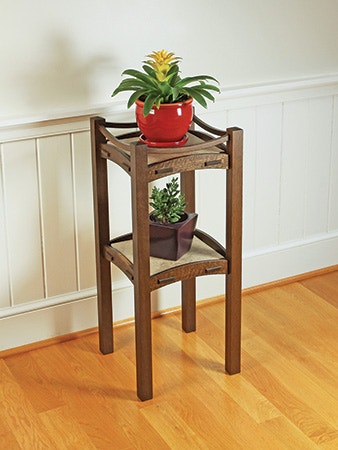
White oak may be the belle of the ball for most traditional Arts & Crafts furniture, but the species has a broad range of workaday uses, too. It is well suited for cabinetry, timber framing, flooring, millwork and veneer. Historically, white oak also answered the call for wagon bottoms, ladder rungs and agricultural implements, among other uses. Unlike red oak, white oak pores are filled with tyloses, which makes the lumber watertight — a clear benefit for its use in barrel construction, boat-building, fence posts and railroad ties.
While white oak lumber is hard and heavy, it cuts, routs, drills and fastens easily. The wood bonds well with a variety of wood adhesives, and it takes dyes and stains fairly evenly. Its heartwood ranges from yellowish brown to pinkish, and the sapwood is lighter colored to creamy.
You'll pay a couple dollars more per board foot for quartersawn white oak than plainsawn, due to its in-demand figure and the lower yield quartersawing produces. It also generally is limited to 4/4 or 5/4 thicknesses, but thicker cuts are available from specialty suppliers.
Shop Score Card
|
Uses: Furniture, cabinetry, flooring, veneer, general millwork, barrel construction, fence posts. Hardness: Hard with medium bending and crushing strength; low stiffness, suitable for steam bending. Country of Origin: Predominantly eastern U.S., Canada.Workability: Planes and cuts smoothly, easy to rout for joinery or profiles, but use care near edges to avoid chipping. Internal tannins can react with ferrous metals to leave black stains on wet wood. Finishing: Sands and polishes smoothly. Responds well to pigment stains, dyes and ammonia fuming. Cost: Plainsawn white oak is moderately priced. Quartersawn costs more but not prohibitively so. |
Keep the inspiration coming!
Subscribe to our newsletter for more woodworking tips and tricks
